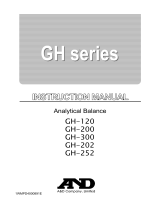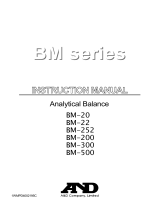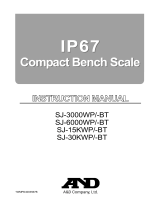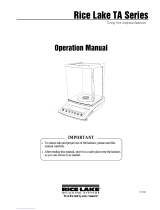
13
3-2 When Building into a System
The AD-4212A/B is a precision balance. When it is built into a system and used, errors such as
unstable weight values may occur due to static electricity, vibration and materials used for the
devices near the balance.
When using the balance that is built into a system, take the following precautions.
Errors due to a static charge
When the ambient humidity is less than 45% RH, insulators such as plastic or glass are prone to
static electricity. When charged material comes close to the balance, a pulling force is generated
between the charged material and the weighing pan. This causes an unstable weight value.
To protect the balance against a discharge generated by charged material when it comes
close to the balance, make sure to earth ground the weighing unit and the display unit.
(Static electricity generated by static induction will not be canceled by earth-grounding.)
Measures to take (Plastic is used in the measures below. They can be applied to glass, too.)
When the sample or devices are plastic
Use a static eliminator that generates no air blow such as the
AD-1683, DC static eliminator, to remove static electricity.
Place the sample in a container that is made of a conductive
material such as metal and that can be sealed and weigh it.
When the sample is powdery
When the balance is used in combination with a feeder for
batch weighing of powdery samples, samples may be
charged by rubbing sample particles against each other.
Use a static eliminator and perform weighing while removing
static electricity.
When the sample container is made of material that is prone to static electricity such as plastic
Cover the outside of the container with a metal such as aluminum foil.
Apply an anti-static agent onto the container.
When making a breeze break using plastic
Apply an anti-static agent onto the breeze break.
Use a conductive acrylic fiber.
When plastic exists in the balance installation site
Cover the plastic with a grounded metal.
Apply an anti-static agent onto plastic.
Metal case
Charged
material
Grounding
A pulling force generated between
the charged sample and the balance
causes an unstable weight value.
Charged plastic breeze break
The pulling force
makes the weight
value unstable




























